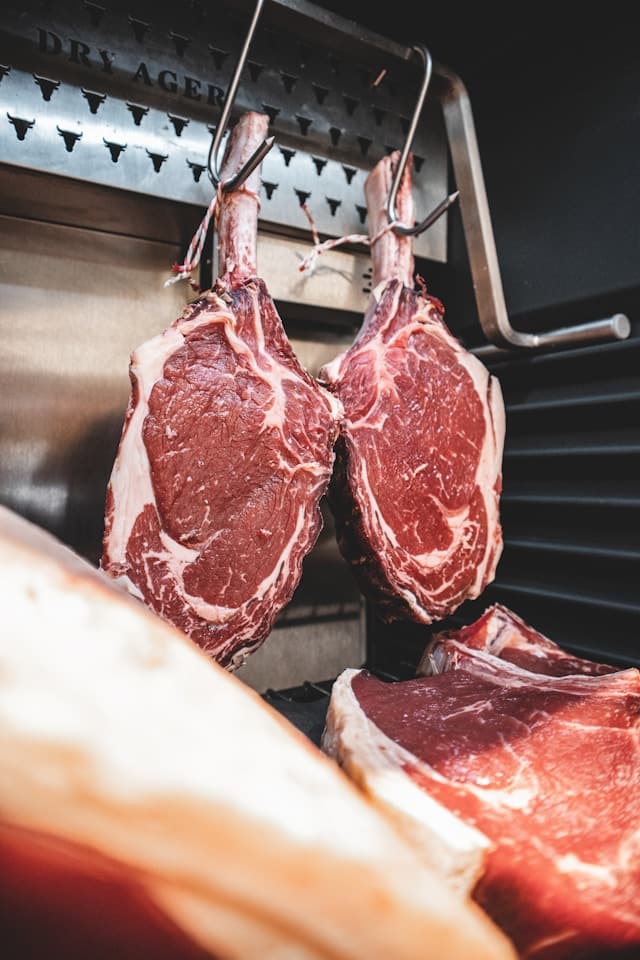What’s the Secret to a Tender and Juicy Brisket with a Texas-Style Rub?

Unveiling the secrets behind a tender and juicy brisket, embellished with a savory Texas-style rub, is like uncovering a culinary mystery. Brisket, a cut of beef that comes from the breast or lower chest of the animal, is typically characterized by its thick layer of connective tissue. Thus, it requires careful cooking methods to break down that tough material and unlock a succulent, melt-in-your-mouth texture. Complementing the brisket with a Texas-style rub adds a smoky, flavor-filled touch that elevates the meat to an ultimate dining experience. Let’s dig deeper into the art of preparing brisket, focusing on the process of using a rich, Texas rub.
Choosing the Right Brisket
Before we delve into the actual cooking process, it’s essential to start with selecting the right brisket. Picking a brisket with a thick layer of fat will greatly enhance the end result. This layer of fat, also known as the fat cap, will slowly render during the long cooking process, naturally basting the meat and keeping it moist and juicy.
Avez-vous vu cela : What’s the Key to a Perfectly Baked French Quiche Lorraine with a Flaky Crust?
When selecting your brisket, pay attention to the marbling, the small streaks of white fat throughout the meat. These streaks will melt during the cooking process, adding a lot of flavor to the brisket. A good quality beef brisket should be a deep red color with white marbling.
Once you have your perfect brisket, it’s time to prepare it for cooking. Trimming the fat cap to about 1/4 inch thick will allow the rub to penetrate the meat while still providing the benefit of self-basting during cooking.
Lire également : How to Make a Flawless Salted Caramel Chocolate Tart with a Shortbread Crust?
Preparing the Texas-Style Rub
Now that we’ve chosen and prepared the brisket, let’s focus on the Texas-style rub. The rub is where you get to add your personal touch and build layers of flavor onto your brisket. A traditional Texas rub is simple, mainly consisting of salt and black pepper. However, you can experiment with added ingredients like garlic powder, onion powder, paprika, and cayenne pepper to suit your taste.
The key is to mix your chosen ingredients together until they are well combined, then liberally apply the rub to your brisket. Make sure to press the rub into the meat, ensuring it sticks and penetrates the surface. Once your brisket is fully coated in the rub, it’s ready for the next stage: smoking.
Mastering the Art of Smoking the Brisket
In Texas, smoked beef brisket is a staple, and the flavor imparted by the smoke is an essential part of the dish. Smoking a brisket can take a considerable amount of time, usually between 12 to 18 hours depending on the size and thickness of the meat. This slow cooking process allows the tough fibers in the meat to break down, resulting in a tender and juicy brisket.
For an authentic Texas-style brisket, using a wood smoker is recommended. The type of wood you use can greatly influence the flavor of the brisket. In Texas, post oak is commonly used due to its mild flavor and slow, steady burn. However, other woods like hickory, mesquite, or pecan can also be used.
During the smoking process, it’s crucial to maintain a consistent temperature within the smoker. Typically, a temperature between 225 to 250 degrees Fahrenheit is optimal for smoking brisket. Monitoring the temperature and adjusting the vents on your smoker as needed will help ensure a perfect brisket.
Wrapping the Brisket: Foil vs. Butcher Paper
A debate among brisket enthusiasts is whether to wrap the brisket partway through cooking, and if so, which to use: foil or butcher paper. Wrapping can help prevent the brisket from drying out during the long cooking process.
The decision between foil and butcher paper can impact the outcome of your brisket. Foil will lock in moisture and speed up the cooking time, but it can also make the bark, the flavorful crust on the outside of the brisket, soft. Butcher paper, on the other hand, is breathable, allowing smoke to still penetrate the meat while protecting the bark.
The choice between foil and paper is up to personal preference, with some even preferring not to wrap their brisket at all. Experiment and find what works best for your brisket recipe.
Resting and Serving the Brisket
Finally, after hours of smoking, your brisket is almost ready. But there’s one last crucial step: letting the brisket rest. After removing the brisket from the smoker, place it on a cutting board and allow it to cool for at least an hour before slicing. This gives the juices time to redistribute throughout the meat, ensuring that every bite will be juicy and full of flavor.
Once the brisket has rested, it’s time to slice and serve. The brisket is composed of two parts, the flat and the point. The flat is leaner and should be sliced against the grain into thin slices, while the point is more marbled and can be cut into thicker slices or chunks.
The mastery of creating a tender and juicy brisket with a Texas-style rub lies in the careful selection of a good quality brisket, the preparation of a flavorful rub, the patient smoking process, the choice of wrapping material, and the important resting period before serving. Armed with these secrets, you are now ready to embark on your brisket journey.
Monitoring the Internal Temperature
After long hours of smoking comes the crucial step of checking the internal temperature of the brisket. Monitoring the internal temperature ensures that your brisket is cooking evenly and at the right pace. An ideal temperature for a finished brisket is about 195 to 203 degrees Fahrenheit. However, it’s important not to rely solely on temperature to determine if your brisket is done.
The texture and feel of the brisket is also a good indicator of its readiness. The brisket should feel tender and probe easily. It should not resist the probe of a meat thermometer or skewer. If the brisket is still tough, it needs more time, regardless of the internal temperature. It’s the prolonged exposure to low heat that breaks down the tough collagen in the brisket and creates that tender result we’re looking for.
A quality digital meat thermometer is an essential tool in your brisket smoking arsenal. It offers a precise temperature reading and prevents over or under-cooking your brisket. Make sure to insert it into the thickest part of the brisket, avoiding the fat or the fat cap to get an accurate reading. Remember, patience is key when smoking a brisket. The goal is low and slow to keep the brisket moist and tender.
Crafting Burnt Ends
A popular addition to a Texas-style brisket recipe is the creation of burnt ends. These mouthwatering morsels are cut from the point end of the brisket, which is fattier and more flavorful. The name might be misleading, but these burnt ends are far from being burnt or overcooked.
To make burnt ends, you’ll need to separate the point from the flat after the brisket has finished smoking. Cube the point into bite-sized pieces, toss them with some extra brisket rub or barbecue sauce, then place the cubes back into the smoker. The result is a caramelized, smoky, and succulent piece of beef that provides a delicious contrast to the sliced brisket.
Remember, burnt ends require extra cooking time, so plan accordingly. They’re traditionally served alongside sliced brisket, offering a contrasting texture and an explosion of flavor. They’re a fantastic way to use the whole brisket and elevate your barbecue to the next level.
In Conclusion: Perfecting your Texas-Style Smoked Brisket
In the end, a tender and juicy brisket with a Texas-style rub isn’t just about the right cut of beef or the right smoker. It’s also about the understanding and execution of the entire process: from selection of a well-marbled beef brisket, careful trimming of the fat cap, crafting a personalized Texas-style brisket rub, to the patience required in smoking brisket at a consistent low temperature. It’s about knowing when to wrap your brisket using either foil or butcher paper, keeping an eye on the internal temperature and finally, allowing it to rest before slicing into the flat or point.
Creating burnt ends from the point, a trick borrowed from Kansas City barbecue tradition, adds another layer of texture and flavor to your Texas smoked brisket. This step might seem daunting, but it’s well worth the extra effort.
There’s no shortcut to perfection when it comes to a tender and juicy brisket with a Texas-style rub. It requires time, patience, and practice. But with the secrets unveiled in this guide, you’re well on your way to mastering this iconic dish. Remember, each brisket is unique, and each smoking session is a chance to learn, experiment, and perfect your technique. Happy smoking!
